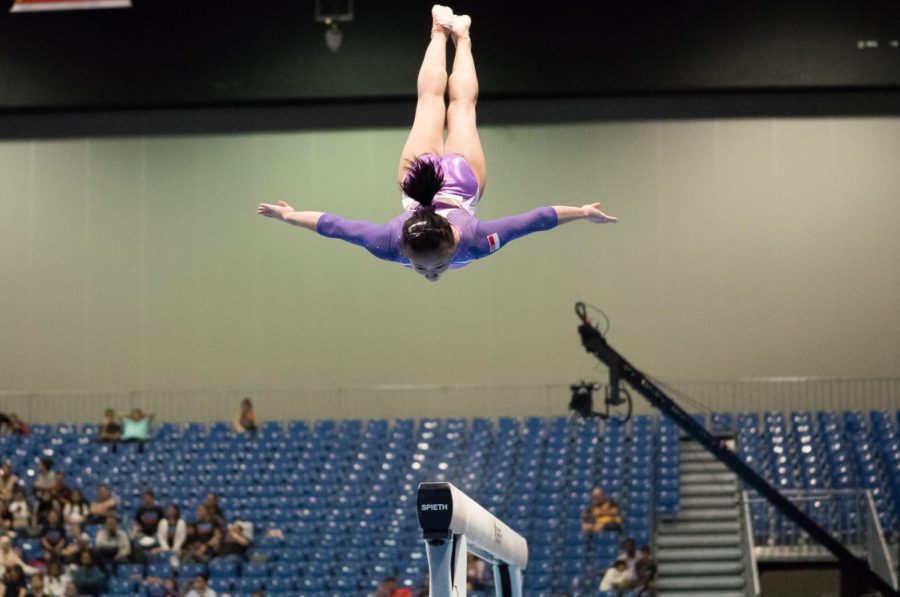Over sexualization of females is present in sport uniforms (Opinion)
Sporting uniforms promote sexualization rather than comfort and protection for women
In gymnastics, females are required to wear leotards, while males in this sport wear clothes that cover more of their bodies. This dress code promotes women not to wear what makes them feel most comfortable.
October 21, 2021
Throughout past years, the female dress code in sports has been a controversial topic. In a number of cases, female bodies are made the main topic of sport discussions, rather than their athleticism. On the other hand, male athletes are applauded for their strength and skillfulness. Some do not take female sports seriously because women are evaluated by their sexual potential, instead of their athletic ability.
“I’m not a woman that’s an athlete. I’m an athlete,” commented Skylar Diggins, an American basketball player. She believes that being a woman does not take away the strength and endurance of being an athlete. Both genders should be viewed equally for their athletic ability. Over sexualizing of a female athlete’s body is often emphasized further by media and marketing executives, who utilize this for their own financial gain.
Women’s American football, being one of the worst forms of sexualized uniforms in sports history, offers ladies playing little to no protection. These uniforms give as much coverage as a bikini. The male version of this uniform expose almost no skin, as they include padding and multiple layers.
Is safety not the priority? Is the priority how females look?
In the 20th century, efforts were made towards the feminist movement that highlighted how differently women are viewed and treated in the sporting community compared to men. Some athletes claim they were rejected from certain sporting opportunities because their bodies didn’t look “efficient enough”. Doing so goes against Title IX of the Education Amendments of 1972, which states, “No person in the United States shall, based on sex, be excluded from participation in, be denied the benefits of, or be subjected to discrimination under any educational program or activity receiving federal financial assistance.”
Sports should be open to and equal for everyone. All genders should be viewed based on their athletic ability, not appearance or a strict dress code like the one females are obligated to follow. These dress codes currently being enforced should be optional; females should be able to compete in what they feel most comfortable in.
A woman should have the opportunity to choose what coverage and modesty that she wants to adhere to. These decisions should be made by the athlete.
Why are these disputed uniforms required in the first place? The answer is simple: marketing. Media agents know that photos of a woman in a bikini or other uniforms with little coverage will generate more sales figures. Marketing executives know that catering towards the male gaze will increase ticket sales to games.
Solutions to this problem are as simple as giving a variety of uniform options, within reason, that both men and women can choose from.
Women who dedicate their lives and passion to a sport with diligent, draining tournaments should be acknowledged and valued for exactly that, not clothing that they are sexualized in.













Damon McMillan • Oct 22, 2021 at 8:36 am
Absolutely! Great article. I couldn’t agree more.